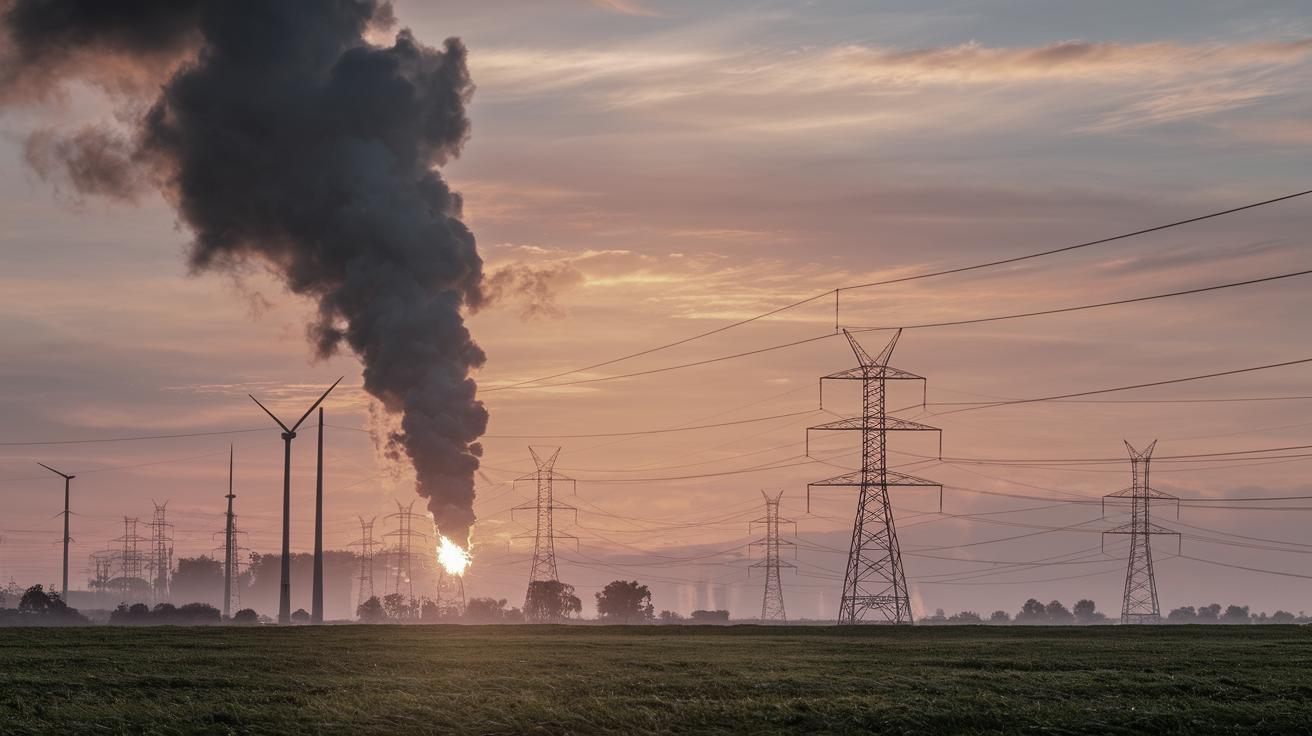Strategies for Decarbonizing Energy Systems
As the global community intensifies efforts to combat climate change, decarbonizing energy systems has become a top priority. This intricate process involves reducing carbon dioxide emissions and other greenhouse gases across different sectors, with the aim of creating a clean, sustainable energy landscape. In this blog post, we will explore five key strategies: increasing energy efficiency, electrifying operations, embracing renewable energy, reducing emissions from refrigeration and transportation, and leveraging digital technologies. Each of these strategies plays a crucial role in minimizing our carbon footprint and transitioning to a more sustainable future. By examining these approaches, readers will gain insights into the potential pathways and innovations driving the decarbonization of our energy systems.
Increase Energy Efficiency
Enhancing energy efficiency is a fundamental strategy for decarbonizing energy systems. By making informed choices in the design and operation of buildings, transportation, and industrial processes, we can significantly reduce energy consumption. Implementing advanced technologies, such as smart meters and energy management systems, allows for real-time monitoring, enabling businesses and consumers to optimize their energy use. Additionally, transitioning to energy-efficient appliances and lighting can cut down on electricity demand while reducing carbon emissions.
Efforts to improve energy efficiency also include optimizing cooling, heating, and ventilation systems. Retrofitting buildings with better insulation, energy-efficient windows, and daylighting systems are essential steps toward achieving greater efficiency. Furthermore, industrial processes can benefit from combined heat and power (CHP) systems, which enhance energy production while minimizing waste. These collective advances in energy efficiency not only contribute to decarbonization but also lead to cost savings and increased energy security.
Electrify Operations
The shift towards electrification aims to replace fossil fuel-based systems with those that run on electricity, which can be progressively sourced from renewable energy. Transitioning operations such as heating, transportation, and industrial processes to electric power reduces reliance on carbon-intensive fuels. For example, electric vehicles (EVs) have grown in popularity, providing a cleaner alternative for road transport while contributing to emission reductions.
Industries are also looking to electrify their operations, moving from steam boilers to electric heaters or using electric motors to power their machinery. This transition is supported by advances in battery technology, increasing the efficiency and capacity of storing electricity generated from renewable sources. Electrification, thus, not only diminishes carbon emissions but fosters innovation, paving the way for a sustainable energy future.
Embrace Renewable Energy
Renewable energy sources, such as solar, wind, hydro, and geothermal, are crucial to deep decarbonization efforts. By generating electricity from these sustainable sources, countries can significantly reduce their reliance on fossil fuels, thus decreasing their carbon footprints. Investments in renewables have surged globally, driven by technological advancements and declining costs, making solar panels and wind turbines more accessible and efficient.
Countries can further accelerate their transition to renewables by enhancing grid infrastructure and developing policies that encourage the adoption of clean energy. Furthermore, increased research in energy storage technologies can address intermittency issues associated with solar and wind power. By stabilizing grids and ensuring consistent energy availability, renewable energy systems become more robust and scalable. As renewables expand their role in global energy systems, they represent a vital cornerstone in the fight against climate change.
Reduce Emissions from Refrigeration and Transportation
Refrigeration and transportation are major contributors to greenhouse gas emissions, largely due to the high global warming potential of the gases used and reliance on fossil fuels, respectively. To address emissions from refrigeration, alternative refrigerants with lower environmental impacts, such as hydrofluoroolefins (HFOs), are being adopted. Companies are also exploring innovations such as magnetic refrigeration and advanced insulation techniques to further reduce emissions.
Transportation emissions can be curtailed through the development of more efficient vehicles, the promotion of public transportation, and the adoption of cleaner fuels. Encouraging the use of EVs, along with the deployment of comprehensive charging infrastructures, is essential in minimizing transport-related carbon emissions. By advancing propulsion technologies and adopting sustainable practices, both sectors can significantly reduce their carbon footprints.
Leverage Digital Technologies
Digital technologies offer transformative potential in the drive towards decarbonization. Tools like IoT (Internet of Things), artificial intelligence (AI), and blockchain can be harnessed to optimize energy management systems, improve grid operations, and facilitate the integration of renewable energy. AI algorithms can predict energy demand, enabling more efficient deployment of resources and reducing waste.
Additionally, digital platforms facilitate the decentralized energy exchange, allowing consumers to sell excess energy back to the grid, thus supporting microgrid development. Blockchain technology can enhance the transparency and security of renewable energy transactions, fostering trust and efficiency. By leveraging these technologies, the energy sector can realize significant reductions in emissions, while ensuring reliable and sustainable energy access.
Summary of Main Points
| Strategy | Description | Key Benefits |
|---|---|---|
| Increase energy efficiency | Improves building, industrial, and transportation efficiency using advanced systems | Reduces energy consumption and emissions, cost savings, increases energy security |
| Electrify operations | Transitions systems from fossil fuels to electricity | Minimizes carbon dependency, extends use of renewables, supports innovation |
| Embrace renewable energy | Shifts energy production to sustainable sources like solar and wind | Decreases reliance on fossil fuels, reduces carbon footprints, boosts energy stability |
| Reduce emissions from refrigeration and transportation | Introduces cleaner technologies and fuels in refrigeration and transport sectors | Lowers greenhouse gas emissions, promotes cleaner energy use |
| Leverage digital technologies | Utilizes IoT, AI, and blockchain for optimizing energy systems | Enhances system efficiency, security, and transparency, reduces emissions |


